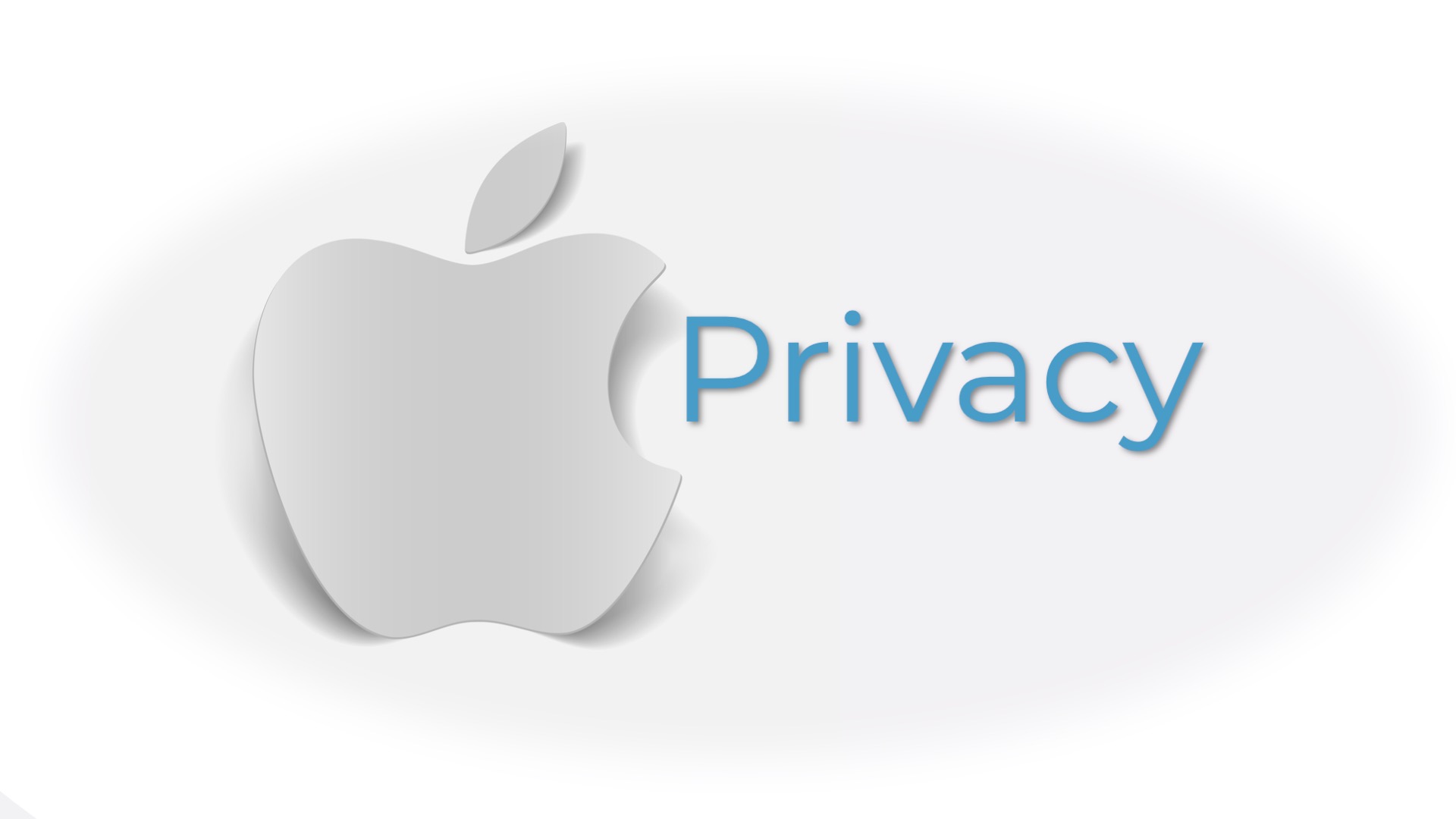Five Types of Digital Marketing to Help You Plan Your Digital Strategy

Digital marketing spend is poised to reach 120 billion dollars by 2021, with growth pacing at 11% per year.
In this post, we define the five broad types of digital marketing categories that comprise a solid digital marketing strategy – from search engine optimization to social media – and we promise to keep things as buzzword-free as possible.
Though there are dozens of different ways you can advertise and promote yourself online, our aim is to keep things simple by bucketing digital marketing into five types or categories. Digital marketing is constantly evolving, so we fully anticipate that we’ll need to update this post at least once a year if not more.
Five Types of Digital Marketing
- Search Marketing is the promotion of a website or web page on search engines by using paid search ads or organic search engine optimization. Search marketing is focused on keyword targeting – ads or listings appear in search results based on user queries that trigger the ad. Search ads and search listings are text based, though there are some exceptions to this such as shopping ads or map ads that feature thumbnail images of products or a photo of a company’s headquarters.
Paid Search: Paid search ads are purchased directly from search engines via the use of self-serve platforms that enable advertisers to bid on keywords, customize ads, and choose designated landing pages for their campaigns. While targeting for search ads is primarily restricted to keywords (as opposed to demographic or psychographic targeting), ad serving can be refined to specific geographic locations, time of day, day of week, device type, limited demographic information, and audience lists.
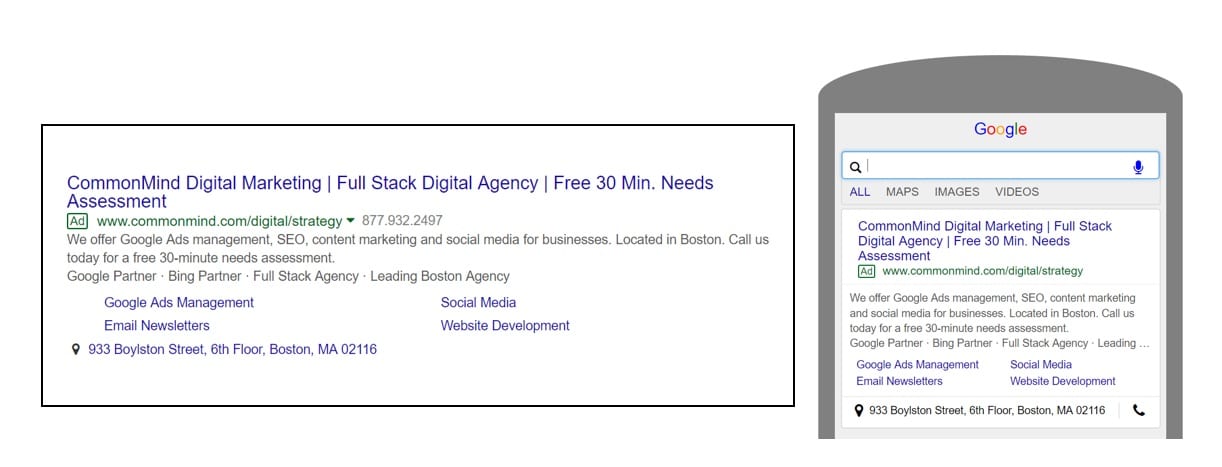
Examples of a paid search ad on desktop (left) and mobile (right) devices
Shopping Ads: Shopping ads on Google are paid ads that advertisers can bid on using a product feed. Advertising on Google Shopping is two-step process. First, a product feed is uploaded to Google’s Merchant Center. Then, the advertiser must connect their merchant account to Google Ads and create a shopping campaign. When a user searches for product, the shopping ad appears at the top of the search results in the form of a product listing (a thumbnail image of the product that includes price, description, vendor name, and other relevant product information).
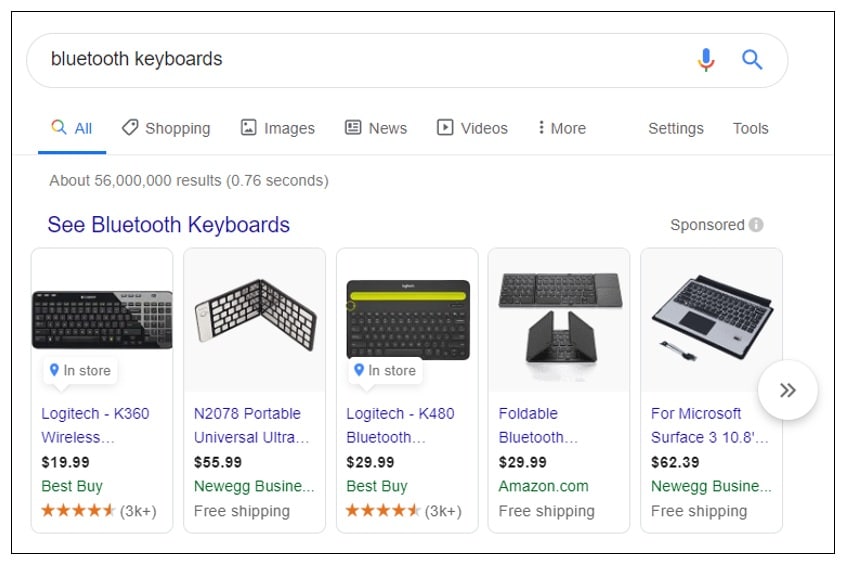
Example of Google Shopping ads for the term “bluetooth keyboards”
Organic Search Engine Optimization (SEO): SEO is the process of optimizing web site content so that it will appear high up in the organic search results for a specific keyword. Organic listings on search engines are free, but the process of optimizing a website can cost money either via the use of internal employee hours or by hiring an outside expert. In addition to optimizing your web site’s copy for search engines, there is an “off page” element to SEO that involves getting quality links from outside sources that link back to your site.
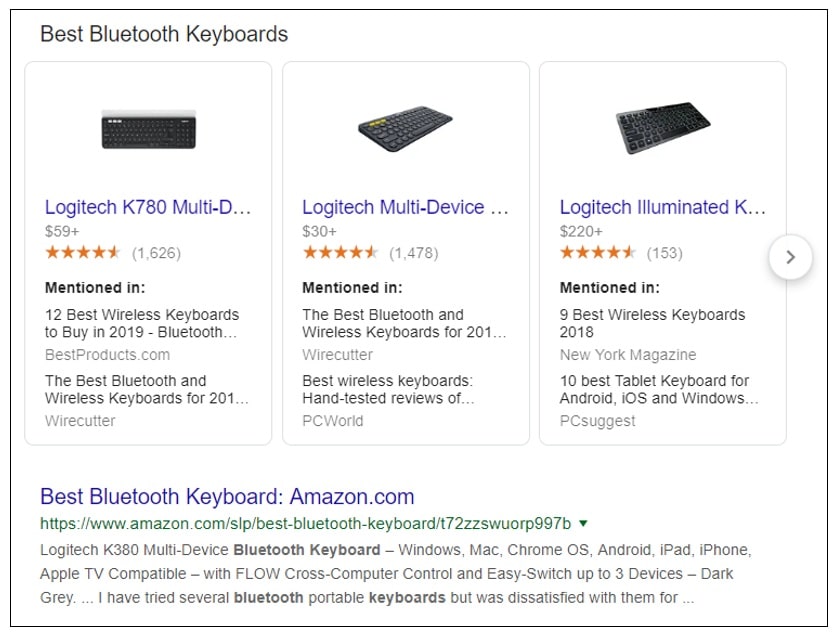
Example of Organic Listings for “Best Bluetooth Keyboards”
- Social Media Marketing includes running paid ads on social media platforms like Facebook and Twitter as well as creating organic posts to push out to your followers (or promote in order to attract new followers). Social media ads can be targeted by demographic, location, topic of interest, audience list, and other segments. Social media ads can contain video, slide shows, or single images as well as text only. When a social ad appears on a user’s social media feed, the user can comment on the ad, like it, or click on it to either visit the advertiser’s profile or their website. Another aspect of social media marketing Is the growing trend of “Influencer” marketing. This involves finding someone with a lot of followers and social credit in a specific category and paying them to post about your business, product, or service.
- Email Marketing has been around for two decades and is one of the oldest types of digital marketing. Businesses can rent email lists for a desired demographic (e.g., physicians, business professionals, baby boomers) or build their own internal list. Businesses build email lists in a variety of ways such as asking visitors to sign up for a newsletter, fill out a contact form, register for webinar or to gain access to gated content. A successful email marketing campaign needs good content and/or an enticing incentive to push out to the list.
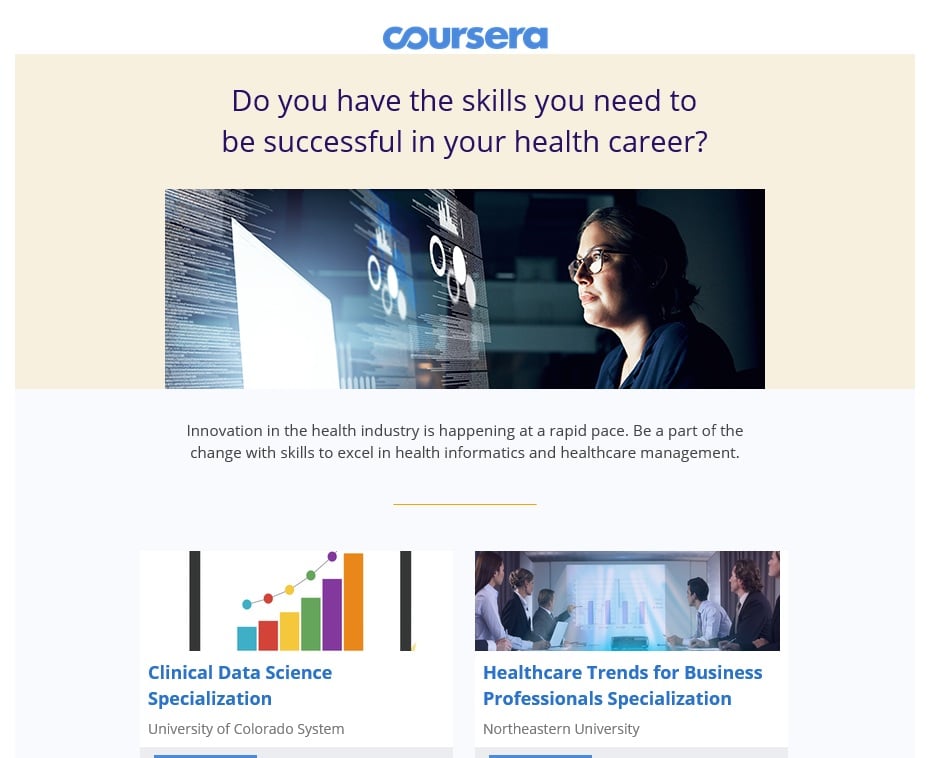
Example of an email blast from Coursera aimed at healthcare professionals
- Content Marketing, also called inbound marketing, is the process of creating content to generate leads or sales by attracting prospects (or existing customers) to a company’s website. The goal of content marketing is to get people to come to you. The expense involved in creating content is generally focused on paying producers such as writers, graphic designers, and programmers as well as hiring third party entities to help you develop a content strategy and create or plan out your content.
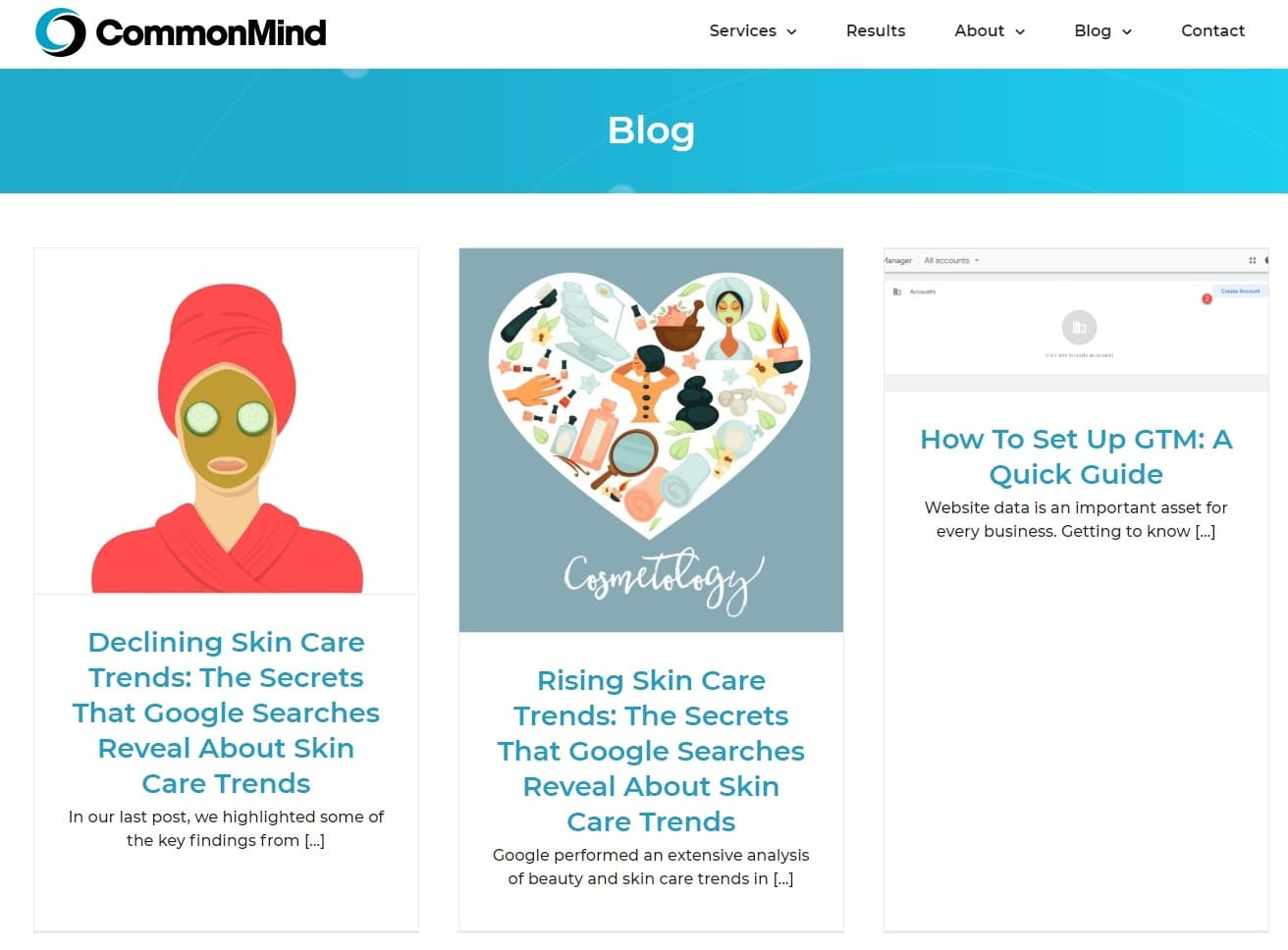
Example of blog content on CommonMind’s digital marketing blog
- Display/Branding is a digital marketing type that employs visual elements to advertise a product, service, or brand online. When we say “display” in digital marketing, we’re generally referring to banners or social ads that use images or video, including video ads on YouTube and other platforms. Since digital marketing tends to be more focused on response-driven campaigns rather than branding, display has traditionally taken a backseat to other tactics. This is changing with the rise of mobile devices and the voracious consumption of online video by consumers. These days, online video can be used for both branding and response-focused campaigns.
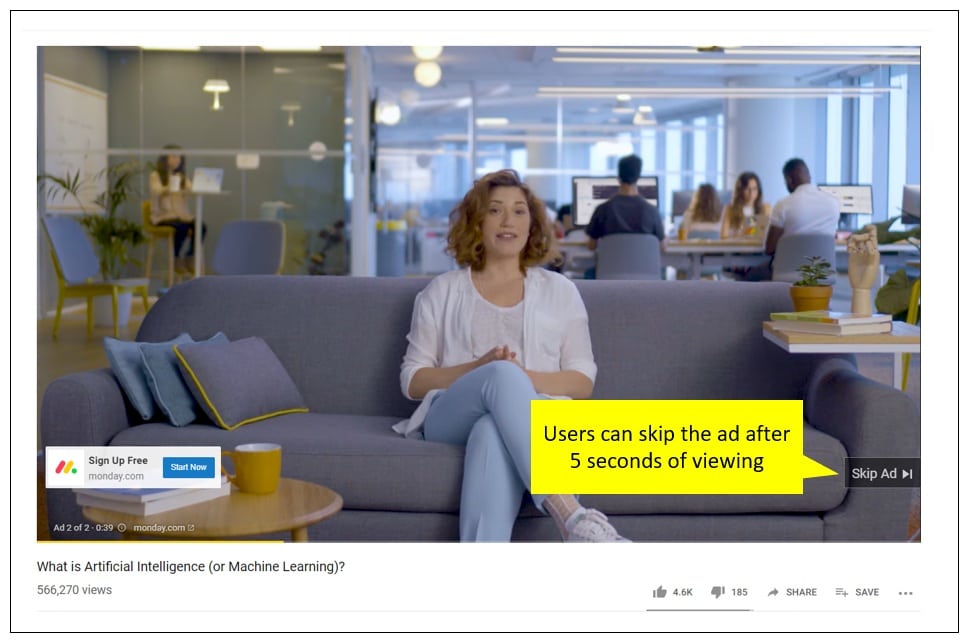
Example of skippable YouTube video ad
Conversion rate optimization
Put simply, conversion rate optimization (CRO) is the act of optimizing digital marketing elements to improve conversion rate. This generally means testing different types of landing pages, content offerings, and incentives until you find a formula that resonates well with your target audience.
Advertisers can also improve conversion by optimizing ad copy, images, placement types, and platforms (e.g., Facebook versus Google) so they invest their media dollars in what works best. Not all digital marketing tactics work well for all advertisers and this is important to consider when planning out your digital media strategy.
CRO could technically be considered a sixth type of digital marketing, but since every tactic listed above performs better with a sound CRO strategy, we wanted to highlight this one separately.
Conclusion
Understanding what types of digital marketing options are available can help advertisers create an informed and well-rounded digital media strategy. As with any marketing initiative, it’s important to set goals up front and make sure you have a solid system for tracking results.
For those just getting started, we recommend implementing a call tracking tool and setting up goals in Google Analytics. Make sure you tag and track every single campaign and monitor the results consistently so you can learn what works and (just as important) what doesn’t.
Share this
You May Also Like
These Related Stories
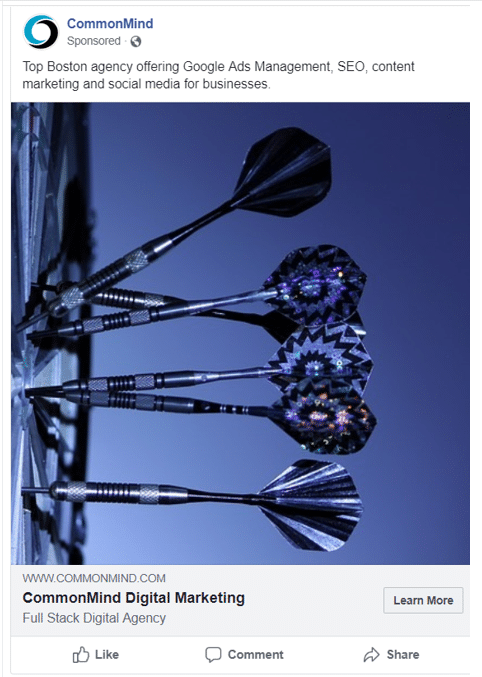
Twenty Examples of Digital Marketing Ads

CommonMind Featured on Clutch as a Leading Marketing & Advertising Agency in Boston and New York!
